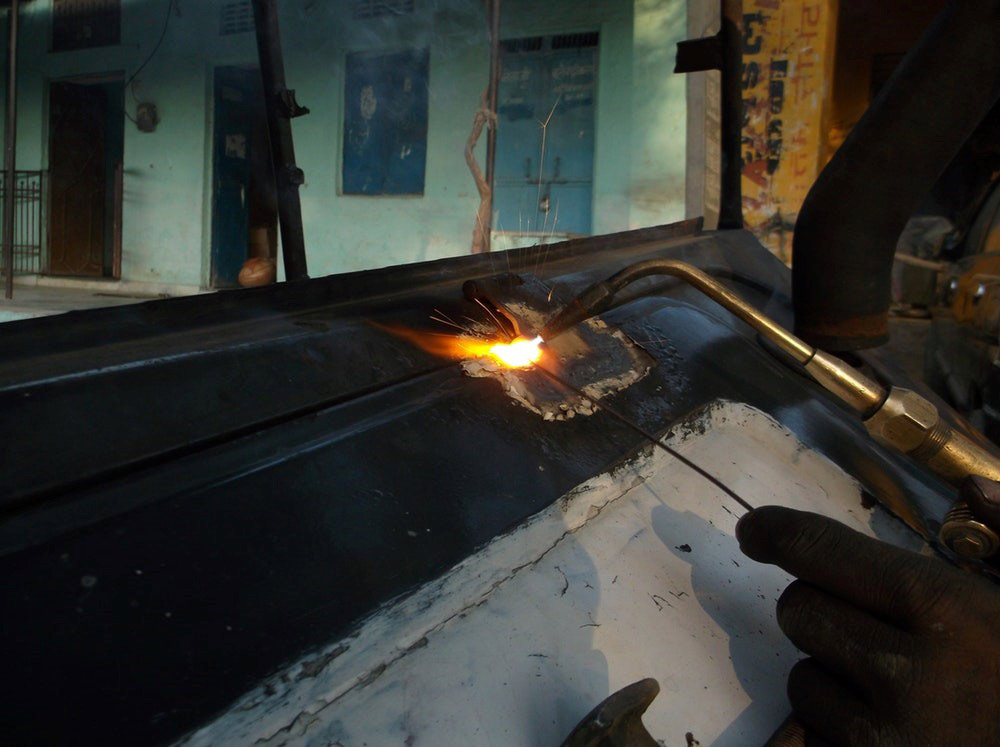Welding is an art form that requires training and practice before mastering this skill. Welders work in a wide variety of environments, and a solid understanding of Stick, TIG and MIG welding can help you be a more well-rounded candidate for a job in this field. If you are embarking on a career in the trade of welding, you might come across the terms “TIG, MIG, and Stick welding” often.
If you’re wondering “What is TIG welding?” here is the simple answer:
TIG welding, which stands for Tungsten inert gas, is a way to weld metal using a non-consumable tungsten electrode, which withstands higher temperatures than other types of electrodes. The tungsten and weld puddle are controlled by an inert gas, like argon. Since tungsten has a higher melting point, an additional filler rod is used. Though it is commonly referred to as TIG welding, the official name for this method is Gas Tungsten Arc Welding or GTAW. It is often used by sculptors for its precise capabilities. When one performs TIG welding, both hands are used, so the welder uses a foot pedal to control the heat.
If you’re wondering “What is MIG welding?” here is the simple answer:
In addition to TIG welding, gas metal arc welding is sometimes referred to by its subtypes metal inert gas (MIG) welding. It is a welding process in which an electric arc forms between a consumable wire electrode and the workpiece metal(s), which heats the workpiece metal(s), causing them to melt and join.
If you’re wondering “What is Stick welding?” here is the simple answer:
Stick welding is a family of welding processes that is not as defined as TIG welding. Arc welding creates a weld by heating materials with an electrical arc until they coalesce. Stick welding can be performed with or without pressure and with or without adding joint filler materials. Many different types of materials can be welded by an arc welding process, assuming they are fair conductors of electricity. The thermal cycling a material undergoes as a result of arc welding can increase the risk of several types of corrosion.
History
TIG welding became ubiquitous during World War II, when items made from steel, aluminum and other metals were mass produced at unprecedented rates. TIG welding made the welding process cleaner and more accurate. This method is more complicated than other types of welding, which is why it is recommended one receives formal training. Eastwick College offers various welding classes toward the welding diploma.
MIG welding began to be developed around the turn of the 19th century, with the discovery of the electric arc in 1800. At first, carbon electrodes were used, but by the late 1800s, metal electrodes had been invented. The official start of MIG welding history is 1948. It was not until 1948 that MIG was finally developed using a smaller diameter electrode and a constant voltage power source. The process relied on an aluminum continuous fed electrode and shielding was with argon gas. Eastwick College offers MIG welding classes toward the welding diploma.
Stick welding also began its development in the 19th century. Stick welding is the most common form of arc welding but creating a good weld may not be easy for the beginner. Unlike wire welding, stick welding has a higher skill level and requires mastery of certain techniques. Eastwick College offers Stick welding classes toward the welding diploma.

